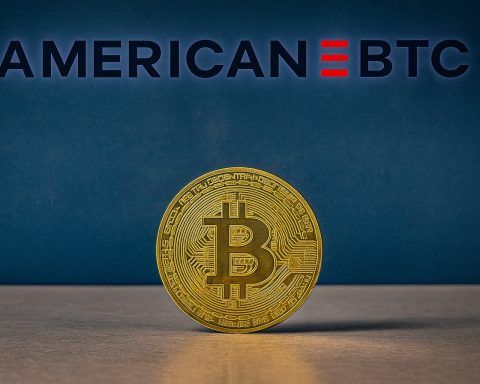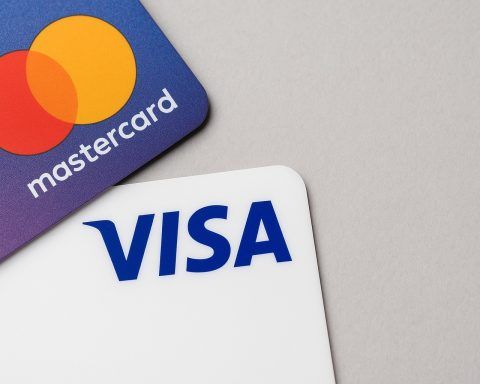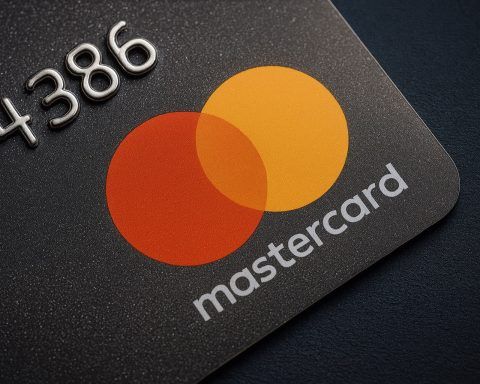If you’re used to tapping the same rewards credit card everywhere without thinking, that habit is about to be stress‑tested.
Over the past few days, Visa and Mastercard have unveiled a revised $38 billion “swipe fee” settlement in a 20‑year antitrust fight with U.S. merchants – and regulators, retailers, banks and consumer advocates are all warning that paying with a credit card is about to get more complicated. [1]
At the same time, a separate multibillion‑dollar settlement from an earlier phase of the same litigation has moved into the payout stage, with partial distributions to merchants now expected in early 2026. [2]
Here’s what changed, what today’s (14 November 2025) coverage is saying, and what it means for your wallet and your business.
1. What did Visa and Mastercard actually agree to?
At the heart of this fight are “swipe fees” (interchange fees) – the charges merchants pay every time a customer uses a credit card. Visa and Mastercard set these fee schedules for the banks that issue cards on their networks.
Those fees have exploded:
- Visa/Mastercard credit‑card swipe fees hit about $111.2 billion in 2024, up from roughly $100.8 billion in 2023 and about four times the level in 2009. [3]
- Total credit and debit card fees across networks reached roughly $187.2 billion last year, making swipe fees many retailers’ second‑highest operating cost after labor. [4]
The new proposed settlement, filed in federal court in Brooklyn and still awaiting judicial approval, does four big things: [5]
- Cuts average credit‑card interchange by 0.10 percentage point for five years
- Fees currently average about 2.35%; they’d drop to roughly 2.25% on average during the relief period.
- Caps standard consumer credit‑card rates at 1.25% for eight years
- That’s marketed as a 25%+ reduction for basic non‑rewards cards.
- Effectively ends the blanket “honor all cards” rule
- Instead of “take every Visa or none of them,” merchants could choose which categories of cards to accept:
- Standard consumer (no/low rewards)
- Premium consumer (rewards cards)
- Commercial cards
- Instead of “take every Visa or none of them,” merchants could choose which categories of cards to accept:
- Expands merchants’ ability to surcharge and steer customers
- Merchants would gain an “unfettered” right to add surcharges up to 3% on some Visa/Mastercard credit cards, and could vary fees by network and card type, subject to state law.
Court‑appointed economic experts say the new rules could generate about $38 billion in savings for merchants by 2031, and potentially more than $200 billion in value when all changes are modeled over the life of the deal. [6]
But that’s just one side of the story.
2. A second track: cash from an older $5.5 billion settlement
Confusingly, there are two major Visa/Mastercard settlements in play right now:
- The new 2025 “rules” settlement (the one that cuts fees and alters card‑acceptance rules going forward).
- An earlier $5.5 billion settlement covering merchants that accepted Visa or Mastercard between 2004 and 2019.
On November 12, 2025, the official Payment Card Interchange Fee Settlement site announced that the court has approved an initial partial distribution of that earlier $5.5 billion fund, with payments expected to begin in early 2026 for eligible claimants whose claims are clear and uncontested. [7]
So while policymakers argue over future swipe‑fee rules, many merchants are simultaneously preparing to receive back‑pay from the old case.
3. How checkout could change for consumers
3.1. “We take Visa – just not that one”
Under today’s rules, if a store accepts Visa or Mastercard, it has to accept every credit card on that network, whether it’s a no‑frills card or a luxury metal rewards card that costs more to process. That’s the long‑standing “honor all cards” rule. [8]
The proposed settlement would let merchants decline entire categories of high‑fee cards:
- A shop could accept standard Visa cards but refuse premium rewards Visas.
- A restaurant might choose to accept commercial cards and basic consumer cards, but not premium travel cards that carry the highest swipe fees.
An Associated Press analysis notes that this could mean some customers find their high‑end travel or cash‑back cards refused at the point of sale, even while the store still takes other Visas or Mastercards. [9]
In practice, merchants will have to balance:
- Cost savings from avoiding high‑fee cards
vs. - Lost sales and customer goodwill if affluent, rewards‑obsessed shoppers feel snubbed.
Many analysts expect selective card rejection to appear first at small, thin‑margin businesses – like independent restaurants and specialty retail – rather than big national chains that rely heavily on premium‑card customers. [10]
Important: The settlement does not cover debit cards or American Express. Your debit card and Amex acceptance rules aren’t directly affected by this deal. [11]
3.2. Expect more surcharges and tiered pricing
Consumer‑facing coverage from outlets such as The Wall Street Journal, NerdWallet and The Points Guy converges on one theme: the most likely visible change is more fees and more fine print at checkout, not an immediate collapse of rewards programs. [12]
Here’s what could happen:
- Card‑type‑specific surcharges:
Today, some stores charge a flat fee for any credit‑card purchase. Under the new rules, a merchant could:- Charge 0% on debit or cash
- Add 2% on standard credit cards
- Add 3% on premium rewards or commercial cards
- More signs and checkout prompts:
Merchants that surcharge or refuse certain cards will need clear signage and point‑of‑sale prompts. Some states tightly regulate or restrict surcharges; the settlement is written to allow merchants to comply with those state laws while still making use of the new flexibility. [13] - New symbols on your physical card:
Issuers would have to add visual markers that show whether a card is “standard”, “premium” or “commercial,” so cashiers and terminals can tell them apart quickly. Analysts warn this could take years as banks reissue cards and upgrade systems. [14]
Surveys cited in recent coverage suggest two‑thirds of consumers would switch payment methods if faced with a 3–4% surcharge, which means retailers will need to tread carefully to avoid backlash. [15]
4. Will this kill my credit‑card rewards?
Short answer: probably not overnight – but the rewards landscape could slowly shift.
Because the fee reduction is modest (roughly 0.10 percentage point on average), analysts and industry groups say banks are unlikely to slash rewards across the board in the near term. [16]
However, several trends could evolve over time:
- Less universal acceptance of top‑tier rewards cards
If more merchants decline premium cards or add surcharges to them, card issuers may need to work harder – with richer bonuses or co‑brand deals – to keep heavy spenders loyal. - More targeted, partnership‑funded perks
High‑end cards already rely heavily on airline, hotel and retailer partnerships to fund perks. That model could deepen, insulating issuers from small changes in interchange while keeping headline rewards intact. [17] - Pressure on “marginal” rewards cards
If acceptance gets patchy, mid‑tier cards with modest perks may struggle. Issuers could:- Fold features into fewer, stronger flagship products, or
- Quietly reduce earn rates or raise annual fees on less‑profitable cards.
Some commentators, including the Financial Times’ Lex column and several tech/finance blogs, argue that the “golden age” of outsized U.S. card rewards was always built on steadily rising fees paid by merchants (and ultimately consumers). With those fees now capped and scrutinized, reward inflation may finally slow down. TechStock²+1
For now, nothing changes immediately: the proposed settlement must clear multiple court hurdles, and even then, implementation will roll out over years.
5. Why merchants and restaurants are furious – again
If this is such a big deal, why are major trade groups urging the judge to reject it?
5.1. “All window dressing and no substance”
The National Retail Federation (NRF), National Association of Convenience Stores (NACS), the Merchants Payments Coalition and the National Restaurant Association have all blasted the proposal, using phrases like “smoke and mirrors” and “all window dressing and no substance.” [18]
Their core complaints:
- The fee cut is too small and temporary
NACS notes that cutting average fees from 2.35% to about 2.25% “essentially” just rolls prices back to 2023 levels, while overall swipe fees have jumped more than 70% since 2020. [19] - Visa and Mastercard keep central control of pricing
The settlement doesn’t stop the networks from setting interchange centrally on behalf of issuing banks – the very practice merchants say is anticompetitive. [20] - Network fees can still rise
The fee caps apply to interchange, the portion of swipe fees that goes to banks, but there’s no explicit limit on the network fees Visa and Mastercard themselves charge. Retailers fear those could quietly increase and erase any savings. [21] - The “honor all cards” fix may be illusory
Trade groups argue that because about 85% of cards in circulation are rewards cards, many merchants will still feel forced to accept them – especially if banks can reclassify cards between categories over time. [22]
Perhaps most importantly, they warn that the settlement would grant broad legal immunity to Visa and Mastercard for swipe‑fee practices during the settlement period, making future lawsuits much harder.
5.2. Why they’re pinning hopes on Congress
Given that two prior settlement attempts (including a $30 billion deal in 2024) have already been rejected by the courts, industry groups are doubling down on a legislative fix: the Credit Card Competition Act (CCCA). [23]
The CCCA would require large issuing banks to enable an additional, unaffiliated network (like NYCE, Star or Shazam) on top of Visa or Mastercard for processing transactions, introducing genuine routing competition. Supporters say that could save merchants and consumers up to $17 billion a year. [24]
Whether Congress will act is still highly uncertain – but today’s trade‑group statements show that political pressure on card fees is only intensifying.
6. What’s the timeline from here?
Nothing in this settlement is effective yet. Here’s the rough path forward: [25]
- Preliminary approval – Judge Margo Brodie in the Eastern District of New York must decide whether the new proposal is even fit to send to the class of merchants.
- Notice and objections – Millions of merchants would be notified and given a chance to support or oppose the deal.
- Fairness hearing & final approval – Only after that could the settlement be approved.
- Possible appeals – Objectors could appeal, potentially delaying implementation further.
Mastercard has told investors that, if approved, final resolution is unlikely before late 2026 or early 2027. [26]
Meanwhile, the older $5.5 billion settlement’s partial payouts – now expected in early 2026 – will proceed on their own track. [27]
7. What consumers should do now
Even though the rules haven’t changed yet, today’s news is a good reminder to tune up your payment strategy:
- Carry at least two payment options
- For example, a Visa or Mastercard plus a debit card, cash, or an Amex. That way, if a merchant refuses your premium rewards card or surcharges it heavily, you have a backup.
- Watch for credit‑card surcharges on receipts
- If you see an extra percentage fee, decide whether you’re comfortable paying it for the rewards – or whether to switch to debit or cash for that merchant.
- Ask before big purchases
- For larger bills (appliances, medical, car repair), ask:
- “Is there a fee for using this card?”
- “Is there a discount for debit or cash?”
- For larger bills (appliances, medical, car repair), ask:
- Review your rewards card lineup
- If one card is frequently surcharged or rejected, you may eventually want to:
- Downgrade to a lower‑fee version, or
- Shift spending to a card with more universal acceptance.
- If one card is frequently surcharged or rejected, you may eventually want to:
- Don’t chase rewards into debt
- As always, rewards are only a win if you pay in full. Rising surcharges make carrying a balance even more painful.
8. What small businesses should do now
For merchants – especially independents – today’s developments are a signal to start planning, not to panic.
- Track both settlements
- Check whether your business is part of the 2004–2019 $5.5B settlement class and whether you filed a claim before the February 4, 2025 deadline; use the official PaymentCardSettlement.com portal for status updates. [28]
- Model your costs under the new rules
- Talk to your processor or accountant about:
- How much you could save by refusing certain card categories
- Whether a 2–3% surcharge on premium cards makes sense in your market
- How state surcharge laws apply to you
- Talk to your processor or accountant about:
- Plan for signage and staff training
- If you eventually choose to:
- Decline some premium cards, or
- Add variable surcharges
you’ll need clear, compliant signage and well‑trained staff to explain the changes without alienating customers.
- If you eventually choose to:
- Engage with your trade associations
- Groups like NRF, NACS, and restaurant associations are actively lobbying on both the settlement and the Credit Card Competition Act. Their bulletins and webinars will likely be the fastest way to understand your options. [29]
- Think long‑term about payment mix
- This may be a good time to:
- Promote lower‑cost payment options (debit, ACH, cash discounts)
- Review whether your pricing already bakes in high swipe‑fee costs.
- This may be a good time to:
9. Quick FAQ: Visa–Mastercard swipe fee settlement 2025
Q: When will I actually see changes at the register?
A: Not immediately. The settlement still needs court approval, which could take years, and then networks, banks and merchants must update systems and cards. Some surcharges or card‑acceptance changes could appear gradually once and if approval is final. [30]
Q: Can a store charge me extra for using a credit card?
A: In many states, yes – within limits. The proposed settlement would explicitly let merchants surcharge up to 3% on some Visa/Mastercard credit cards, though state laws still apply and debit cards remain governed by separate rules. [31]
Q: Could my favorite rewards card be declined?
A: Possibly, once the new rules are in place. Merchants could choose to accept only lower‑fee categories, which might exclude some premium rewards cards. Analysts expect this to be most common among small, cost‑sensitive businesses rather than large chains. [32]
Q: Does this affect debit cards or American Express?
A: No. The litigation and settlement are about Visa and Mastercard credit‑card fees. Debit cards and Amex are outside this agreement, though they’re affected by other regulations and competitive pressures. [33]
Q: Will this make prices lower in stores?
A: That’s the billion‑dollar question. Card networks and some economists say lower fees and more competition should eventually translate into lower prices. Merchant groups counter that the fee cuts are too small and temporary to move the needle much, especially if network fees rise elsewhere. Real‑world price impacts will depend on competitive pressure in each sector. [34]
Even on November 14, 2025, the Visa–Mastercard swipe fee story is still unfolding. What’s clear is that the frictionless, one‑size‑fits‑all credit‑card checkout experience is giving way to a more fragmented, price‑sensitive system – one where the card you choose, and the store you’re standing in, will matter more than ever.
References
1. www.reuters.com, 2. www.paymentcardsettlement.com, 3. www.reuters.com, 4. www.convenience.org, 5. www.reuters.com, 6. www.reuters.com, 7. www.paymentcardsettlement.com, 8. neworleanscitybusiness.com, 9. neworleanscitybusiness.com, 10. www.paymentsdive.com, 11. neworleanscitybusiness.com, 12. www.livemint.com, 13. www.paymentsdive.com, 14. www.livemint.com, 15. www.livemint.com, 16. www.livemint.com, 17. www.livemint.com, 18. nrf.com, 19. www.convenience.org, 20. nrf.com, 21. www.convenience.org, 22. nrf.com, 23. www.reuters.com, 24. nrf.com, 25. www.paymentsdive.com, 26. www.paymentsdive.com, 27. www.paymentcardsettlement.com, 28. www.paymentcardsettlement.com, 29. www.convenience.org, 30. www.paymentsdive.com, 31. www.reuters.com, 32. neworleanscitybusiness.com, 33. neworleanscitybusiness.com, 34. www.reuters.com










